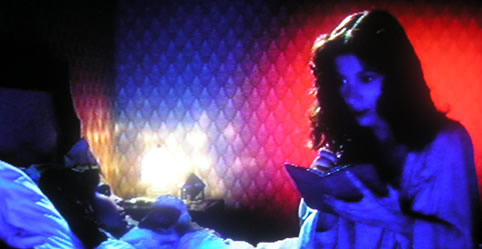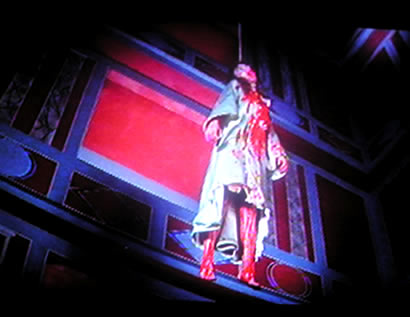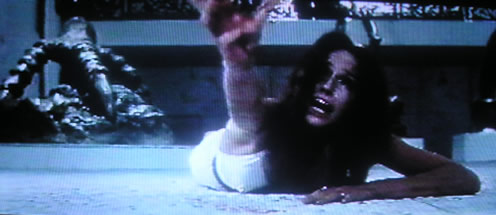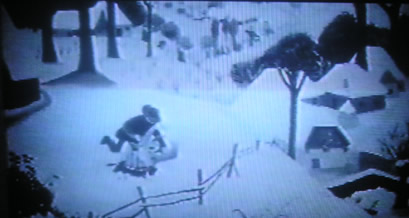” I like women, especially beautiful ones. If they have a good face and figure, I would much prefer to watch them being murdered than an ugly girl or man. I certainly don’t have to justify myself to anyone about this. I don’t care what anyone thinks or reads into it. I have often had journalists walk out of interviews when I say what I feel about this subject “
Dario Argento
“Paradise is too perfect for humanity”
Dario Argento
..and so Argento is still bringing the hell to the earth. Since his 1969 opera prima “L’uccello dalle piume di cristallo” (“The bird with crystal plumage”), a movie that -thanks to its disturbing mix of thriller, B-series horror, and the then-called psychological horror; caused an evident and unexpected astonishment in the cinema world- Italian director Dario Argento (Rome, born September 7th 1940) has always remained faithful to the giallo, that original Italian genre that owes a substantial part of its popularity to the singular figure of the roman master.

Sinister and beautiful… SUSPIRIA (1977)

Die beautiful … SUSPIRIA (1977)
by G. Fernández – theartwolf.com
For many people, giallo means Dario Argento. And although accept that point means to forget figures such as Mario Bava, it is true that nobody like Argento to gather in a same film that strange mix of macabre theatre and sinister depravity that have captivated an audience that is still loyal to his works. Argento’s films are far to be perfect, and the plots – Suspiria is a perfect example- are often relegated in its importance against the amazing sceneries, but they posses a handcrafted taste and an original and spectacular scenery that turn them into true delicatessen to any genre enthusiast.
“Horror is like a serpent; always shedding its skin, always changing”, said Argento. This idea can explain the changes in the artistic career of the Italian director. After successfully beginning with his personal interpretation of the thriller ( “The bird with the crystal plumage” ) Argento changed its registry and started the “Three Mothers Trilogy”, a complex and original meditation about the horror dealing with the supernatural or even the gore , first with Suspiria (“The Mother of Sighs”) and continuying with Inferno (“The Mother of Darkness”). Despite the success of both films, Argento left the trilogy incomplete and return to the thriller with the supreme Profondo rosso . After it, the roman master continues this genre, but penetrating the theatre world in his versions of The Phantom of the Opera .

Death at the gallery . THE BIRD WITH THE CRYSTAL PLUMAGE

Macabre Art – THE BIRD WITH THE CRYSTAL PLUMAGE
Now that the horror genre has descending into the infernos of quality, many people (I’m among them) consider Argento as the guardian of the essences of a genre that has given to the cinema some of its eternals masterworks (aka Psycho, Nosferatu, Jaws.) As the Italian master says, ” horror is the future. And you cannot be afraid”
FILMOGRAPHY
– L’uccello dalle piume di cristallo (“The bird with the crystal plumage”) 1969
The first and one of the greatest. Argento adopts the novel “The Screaming Mimi”, by Frederick Brown, to direct a disturbing story that begins with a mysterious scene in an Art gallery. Although it’s an opera prima , the film has a solid plot and a surprising final scene after a strange pursuit in the Rome streets.
– Il gatto a nove cole (“The cat o’ nine tails”) 1970
Argento repeats the formula that catapulted him to fame with (almost) the same success that in the previous title. The disturbing scene of the murder in the train station is arguably the highlight of the film
– 4 mosche di velluto grigio (“Four Flies of grey velvet”) 1971
– Profondo rosso (“Deep red”) 1975
Supreme. Deep red is arguably Argento’s masterwork, a film that opened the door to many imitators. Argento himself refers to the film as his “favourite movie”, pointing that David Hemmings’ character was based in his own personality. The violence, even brutality of the film was not well received by the censors, who eliminated near an hour of the film’s duration.
– Suspiria , 1977
Possibly Argento’s most famous work, considered as his masterpiece together with ” Profondo rosso ” (I would add “The bird with the crystal plumage” to complete his essential trilogy) and without doubt the best example of the amazing sceneries of the roman director, who even composes the musical accompaniment. The film is a personal adaptation of the Gothic witch tales with original doses of gore and erotism.
– Inferno , 1980
Often called “Suspiria 2” , it was created as a continuation of the famous previous film. It also represents Argento’s first immersion in the gore , helped by the famous director Mario Bava ( 4 volti della paura)
– Tenebre (aka Tenebrae) , 1982
Tenebre mean the return to the thriller side of the giallo after the supernatural adventures of Suspiria and Inferno . The onirical backups are as macabre as beautiful, and the scene of the murder in a public square is perhaps the most ingenuous temerity I have never seen in a film.
– Phenomena (aka creepers) , 1985
One of Argento’s strangest and most disturbing films. In his own words, “Phenomena was inspired by something I heard about insects being used to solve crimes, and because insects have always fascinated me I began to make a story around this idea”. For this film, Argento relies on very popular actors from the American horror cinema, as Donald Pleasance, who had acted in the film Halloween.
– Opera (Terror at the opera) 1987
– Trauma , 1993
Despite being highly criticised (in my opinion quite unfairly) Trauma give us back the essential Argento of “The bird with the crystal plumage” or “Il gatto a nove cole” , relating the brutal crimes of a mysterious assassin that uses a strange electric saw. Although the film abuses of the gore violence, reaching a ridiculous point when a decapitated woman talks a few seconds about her murder, the macabre and sinister final scene is enough masterly to satisfy every Argento fan. Trauma also supposed the debut of the beautiful Asia Argento, daughter of the director, who then acted in many American films with not very satisfactory results.
– La Sindrome di Stendhal ( Stendhal’s Syndrome) 1996
– Il Fantasma dell’opera (Phantom of the Opera) 1998
This personal adaptation of the famous work confirms Argento’s taste for the theatre. The film was prejudiced by another American version of the story which was released at the same time.
– Non ho sonno (aka Sleepless) 2001
Follow us on:
